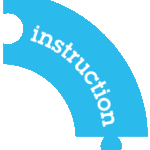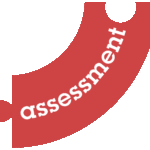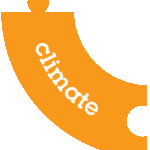Share this article.
We recognize that the main challenge for most schools and districts this coming year will be learning loss recovery. Teachers will be encouraged to spend the school year filling in the gaps of learning that occurred during the pandemic when school did not look like it usually looked. It is crucial that students continue to recover their learning—effectively and efficiently. If that is the goal, educators must discover the reason for the learning loss.
A fear is that educators will focus on the pandemic or online learning or hybrid learning or social distancing as the cause and unlearned skills as the effect and leave it at that. However, by simply looking at the cause and the effect you could miss the bigger question of why those skills and not others. Understanding why is crucial when it comes to developing a plan for reteaching or, in some cases, teaching this skill for the first time. One suggestion is to begin by reflecting on how students were, or were not, supported last year as a way to address what needs to happen this year.
In many districts, students will be given a needs assessment during the first few weeks of school. This should tell teachers what skills students have mastered and what skills they haven’t. Teachers are being told to identify the skills that the majority of students missed and then reteach those. While it is easy to identify those skills from a data report, it will be harder to identify why students did not learn them.
The missing piece of the puzzle is to reflect on why students didn’t master the standard or skills and address their individual needs.
Now, many teachers are going to say that they do know WHY students didn’t learn—it’s the pandemic. We agree that the rupture in how we’ve always done education is a factor, but not the only factor. We need to reflect more honestly about what our students received last year and build from there.
Let’s restate the Challenge: To understand the data, accurately analyze student results, and ensure appropriate instructional action by the teacher to build on strengths and to fill in gaps.
Next, for the Solution: When looking at student results it is important to remember that your goal is to identify WHAT students have learned (or not) and WHY they have learned (or not). Without those two pieces clearly identified, you won’t be able to determine HOW to teach them effectively.
So, once you have identified which standard or skill your students have not mastered, reflect on the instruction of that standard. Analyze what supports your students received regarding the curriculum choices, the instructional choices, the assessment choices, and the climate/culture of the classroom last year. You will reflect on each of these areas to help identify the strengths and gaps of your students’ classroom experience. More than likely, the gaps will help you determine how you will reteach your students to fill in that gap!
Because your upcoming students might not have been your students last year, reflecting on what supports they received will be less precise. But you can ask your students about the supports they received. You can talk with their teachers from last year about the supports they received. You can even think about your practice from last year and extrapolate some patterns.
Don’t worry, we’ll walk you through the steps.
 1. First, take a look at the curriculum choices and ask: Was all of the student learning driven by the standards with measurable and achievable objectives? Many folks implement (or are told to implement) “standards-based” textbooks or programs and feel they then no longer need to worry about the actual standards. Well, this might not work to the advantage of your students. Hoping students master standards through osmosis isn’t a great game plan. Students need more transparency in their learning.
1. First, take a look at the curriculum choices and ask: Was all of the student learning driven by the standards with measurable and achievable objectives? Many folks implement (or are told to implement) “standards-based” textbooks or programs and feel they then no longer need to worry about the actual standards. Well, this might not work to the advantage of your students. Hoping students master standards through osmosis isn’t a great game plan. Students need more transparency in their learning.
So, think about the teaching from last year and ask:
- Did students know what they were learning (skill or content from the standard) each lesson?
- Did students know how they would show that they had learned the skill or content for each lesson?
- Was the skill integrated into the unit so that students had a variety of opportunities to master that skill or content?
- Did students access materials that matched the rigor and content of what they were learning?
Now, if you think the answer is “no” to any of these questions, you might have discovered one of the reasons why your students didn’t master the standard.
And, more importantly, you have the framework of a plan for this year:
- Make sure your students know what they are learning during each lesson.
- Make sure your students know how they can show that they learning the skill.
- Make sure the skill is integrated into the unit so that students have a variety of opportunities to master that skill.
- Make sure your students have access to materials that match the rigor and content of what they are learning.
- And make sure your students are able to articulate all of this information.
 2. Second, take a look at the instruction choices and ask: Was all of the student learning driven by research-based, highly effective and efficient instructional practices? Many teachers over-rely (or are told to over-rely) on just one strategy. It could be that this is the only strategy the teacher knows or is comfortable with, but it also could be that this is a district or school initiative that is expected in every lesson. Well, this might not work to the advantage of the student. Research shows that the best instruction practice is the one that is most effective (students learn to the highest degree) and efficient (students learn the quickest) for the stated objective and the needs of the students. Thus, all instructional strategies can be used if they are the most appropriate for the stated objective and the needs of the students.
2. Second, take a look at the instruction choices and ask: Was all of the student learning driven by research-based, highly effective and efficient instructional practices? Many teachers over-rely (or are told to over-rely) on just one strategy. It could be that this is the only strategy the teacher knows or is comfortable with, but it also could be that this is a district or school initiative that is expected in every lesson. Well, this might not work to the advantage of the student. Research shows that the best instruction practice is the one that is most effective (students learn to the highest degree) and efficient (students learn the quickest) for the stated objective and the needs of the students. Thus, all instructional strategies can be used if they are the most appropriate for the stated objective and the needs of the students.
Think about the teaching from last year and ask:
- Did students have opportunities to make meaning with each other?
- Did students have opportunities to engage in a variety of instructional strategies?
- Did students receive sufficient time to master the learning?
Now, if you think the answer is “no” to any of these questions, you might have discovered one of the reasons why your students didn’t master the standard.
And, more importantly, you have the framework of a plan for this year:
- Make sure your students have opportunities to make meaning with each other.
- Make sure your students have opportunities to engage in a variety of instructional strategies.
- Make sure your students have sufficient time to master the learning.
- And make sure your students are able to articulate all of this information.
 3. Third, take a look at the in-classroom assessment choices and ask: Was all of the student learning drive by regular assessment which determined instructional modifications? Many teachers wait until the end of a lesson or unit to assess if students have mastered the skill or content. Waiting until the end might not work to the advantage of your students. Knowledge of your students’ current understanding lets you adjust and refocus at a moment’s notice. This quick refocusing is easier to do if you have a clear objective and almost impossible to do if you don’t.
3. Third, take a look at the in-classroom assessment choices and ask: Was all of the student learning drive by regular assessment which determined instructional modifications? Many teachers wait until the end of a lesson or unit to assess if students have mastered the skill or content. Waiting until the end might not work to the advantage of your students. Knowledge of your students’ current understanding lets you adjust and refocus at a moment’s notice. This quick refocusing is easier to do if you have a clear objective and almost impossible to do if you don’t.
So, think about the teaching from last year and ask:
- Did students have opportunities to explain when they were learning and when they were struggling?
- Did students receive supportive feedback regarding their struggles?
- Was instruction adjusted based on what the students were learning or were struggling with?
- Was instruction differentiated based on identified student needs such as having an IEP or being an English learner?
Now, if you think the answer is “no” to any of these questions, you might have discovered one of the reasons why your students didn’t master the standard.
And, more importantly, you have the framework of a plan for this year:
- Make sure your students have opportunities to explain when they are learning and when they are struggling.
- Make sure your students receive supportive feedback regarding their struggles.
- Make sure you adjust instruction based on what your students are learning or struggling with.
- Make sure you differentiate instruction based on identified student needs such as having an IEP or being an English learner.
- And make sure your students are able to articulate all of this information.
 4. Last, take a look at the classroom climate and ask: Was all of the student learning driven by a positive climate? A positive learning environment is one where students feel respected and safe and are encouraged to ask questions and take risks. Learning is hard—and making mistakes is integral to academic growth. So, how well the teacher supports students in growing is crucial.
4. Last, take a look at the classroom climate and ask: Was all of the student learning driven by a positive climate? A positive learning environment is one where students feel respected and safe and are encouraged to ask questions and take risks. Learning is hard—and making mistakes is integral to academic growth. So, how well the teacher supports students in growing is crucial.
Think about the teaching from last year and ask:
- Was the classroom a respectful environment that honored and promoted each and every student?
- Did the classroom environment encourage risk-taking?
- Did the classroom environment encourage cooperation and collaboration?
- Did the students recognize that by supporting each other they actually get smarter?
Now, if you think the answer is “no” to any of these questions, you might have discovered one of the reasons why your students didn’t master the standard.
And, more importantly, you have the framework of a plan for this year:
- Make sure your students are in a respectful environment that honors and promotes each and every student.
- Make sure your students are in an environment that encourages risk-taking.
- Make sure your students are in an environment that encourages cooperation and collaboration.
- Make sure that students recognize that supporting each other helps them actually get smarter.
- And mark sure that your students are able to articulate all of this information.
In other words, your plan for learning loss recovery cannot be effective and efficient if you do not clearly understand what worked (and didn’t) during instruction last year. Reflecting on your practice will help you reteach better, initially teach better, and share teaching strategies with your colleagues.
The Learning Brief
In this article you learned…
- Reteaching cannot be effective and efficient if the teacher does not clearly understand what worked (and didn’t) during classroom instruction.
- There should be more to data analysis than just identifying what kids didn’t learn and then reteach them.
- To identify WHAT students have learned (or not) and WHY they have learned (or not), in order to determine HOW to reteach them effectively.
Can you imagine building an environment full of motivated, engaged, and eager students who own their learning?
We can.


